What's New
Displaying results 3481 - 3490 of 4052
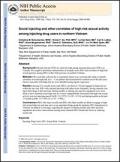
Resource | Publications,
Sexual risk and STDs are relatively high among injecting drug users (IDUs) in Vietnam. We sought to determine characteristics of sexually active IDUs and correlates of high-risk sexual practices among IDUs in Bac Ninh province in northern Vietnam.
IDUs who inject socially and IDUs who share needles are likely to engage in highrisk sexual behaviors and may serve as an important bridge group for epidemic HIV transmission in Vietnam. In addition to messages regarding the dangers of sharing needles and other injection equipment, preventive interventions among newly initiated IDUs should also focus on reducing sexual risk.
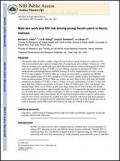
Resource | Publications,
The present study describes complex drug and sexual risk in a group of male sex workers who were recruited in the context of a larger study of young heroin users in Hanoi, Vietnam. Male sex workers were significantly more likely than male non-sex workers to be migrants and to have unstable housing, to have lifetime exposure to marijuana, 3,4 methylenedioxymethamphetamine (MDMA, ecstasy), amphetamines, cocaine and morphine. Male sex workers are more likely to currently use MDMA, amphetamines, morphine and to 'smoke' as their most frequent mode of heroin administration. Male sex workers are more likely to have both male and female concurrent sex partners, to have a history of sexual victimisation, to have had more than three different sex partners in the past 30 days, and to have had partners who injected drugs before sex or who used drugs during sex. In their last sexual encounter with a client partner, approximately one-third (31.1%) reported having had receptive anal sex. In nearly three-quarters of these exchanges (71.4%), no condom was used. Similarly, in their last sexual encounter with a client partner, 42.2% reported having had insertive anal sex and in nearly half (47.4%) of these encounters no condom was used. Consistent with recent data from elsewhere in the region, there is an urgent need for additional research on male sex work in South-east Asia in order to properly situate behavioural interventions for male sex workers in this region.

Resource | Presentations,
The study is targeted at the strategic decision-making level:
- Are current responses effective and cost-effective?
- What is the scale-up perspective?
- Priority Setting of Injecting Drug User (IDU) interventions in Asia
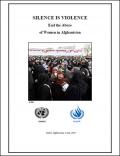
Resource | Publications,
Afghanistan is widely known and appreciated for its rich history, culture, literature and arts as well as its magnificent landscape. It is also widely known that large numbers of Afghans die, or live wretched lives, because violence is an everyday fact of life. Such violence is not openly condoned but neither is it challenged nor condemned by society at large or by state institutions. It is primarily human rights activists that make an issue of violence including, in particular, its impact on, and ramifications for, women and girls in Afghanistan.
The report seeks to put back on the agenda some of the issues pertaining to the enjoyment of all human rights by all Afghan women that are being increasingly ignored. The problems identified in this report require further discussion and public debate, with a view to informing appropriate legal, policy and awareness-raising measures.
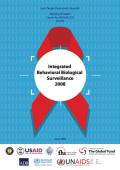
Resource | Publications,
HIV second generation surveillance is a system of surveillance that conducts repeated surveys of both behaviors, HIV serology and prevalence of STI (which serves as a proximate measure for recent exposure to unprotected sex) among population most at risk of HIV infection.
In 2008, the third round of HIV surveillance was needed in Lao PDR to investigate the state of the epidemic, estimate the impact of the program implemented since last round and adjust interventions accordingly.
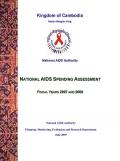
Resource | Reviews and Snapshots,
The HIV/AIDS situation in Cambodia can be described as improving but fragile, with the estimated prevalence rate slowly declining, remaining consistently below one percent for the last three years.
This report includes the results of the second National AIDS Spending Assessment (NASA II) in Cambodia, covering the fiscal years 2007 and 2008. NASA II was carried out from December 2008 to January 2009 under the leadership of the National AIDS Authority (NAA). It was designed to build in a coherent manner on NASA I which was carried out at the end of 2007 and covered the year 2006.
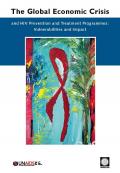
Resource | Publications,
The global economic crisis threatens recent gains in health and poverty reduction in developing countries. What is the effect of the crisis on HIV programmes, especially in high HIV prevalence countries? What are the possible consequences? What can be done to avoid negative impacts? Advanced economies are projected to suffer deep recessions in 2009, with their gross domestic product (GDP) contracting by 5% on average—the first such fall in 60 years. This is generating fears that official development assistance, and in particular resources for social sector spending, including funding for HIV services and commodities, would remain flat during the next few years.
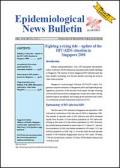
Resource | Fact Sheets,
Human immunodeficiency virus (HIV)/acquired immunodeficiency syndrome (AIDS) remains an important public health challenge in Singapore. The number of newly diagnosed HIV-infected cases has been steadily increasing over the past decade, mirroring the trend in other Asian countries.
Singapore’s multi-pronged National HIV/AIDS Control Programme comprises education of the general public and high-risk groups, legislation, protection of the national blood supply through screening of blood and blood products, management of cases and contact tracing, epidemiological surveillance, and scaling up the prevention and control of conventional sexually-transmitted infections (STIs).
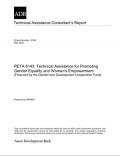
Resource | Publications,
In April 2008, ADB approved DOH’s request for funding to enable the conduct of studies and other activities under the project,“Supporting Women at-Risk and Vulnerable to HIV/AIDS in the Philippines.” ADB provided funding through the Gender and Development Cooperation Fund (GDCF) established under RETA 6143, which supports initiatives to promote gender mainstreaming in ADB operations, gender capacity development, and strategic partnerships.
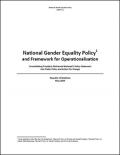
Resource | Guidelines,
The National Gender Equality Policy and Framework for Action consolidates President Mohamed Nasheed’s women's policy framework announced in the International Women’s Day (2009) statement into public policy. The draft includes recommendations for an effective NWM/ Lead Agency for gender mainstreaming, and the tools for gender mainstreaming, and is targeted at realising change through coherent, focused, strategic, rights-based, result-oriented action for gender equality.





